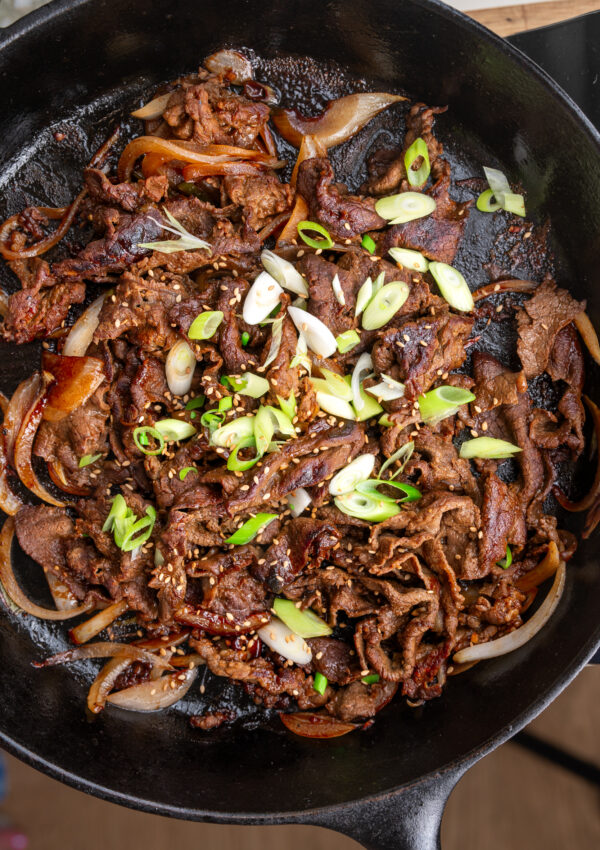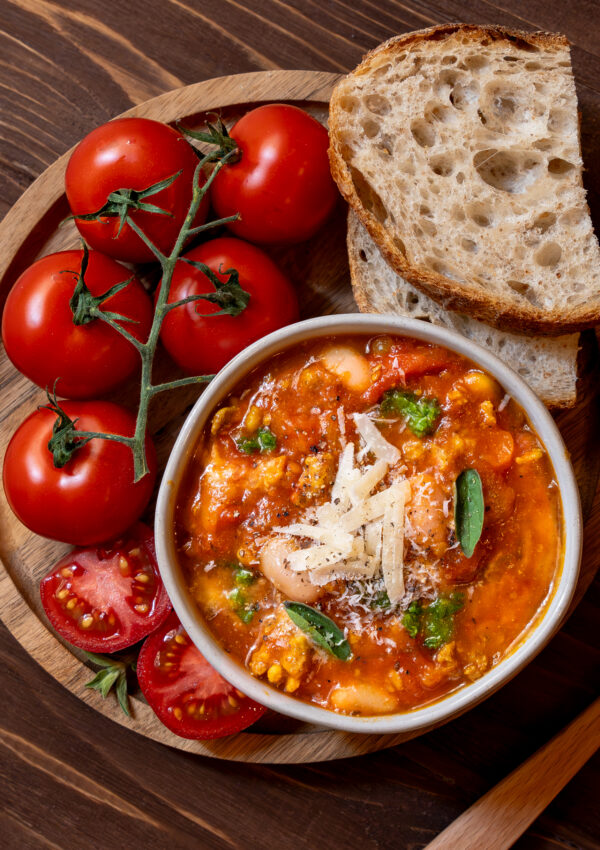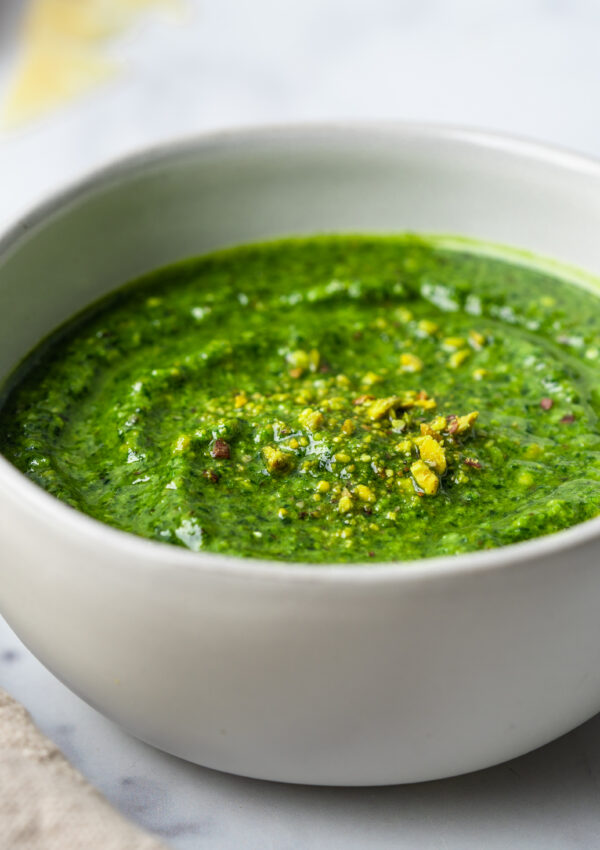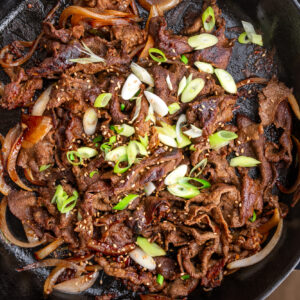Bibimbap is a beloved comfort food for me and it’s usually my fallback dish for those busy weeknights. It’s low-effort and a great way to upcycle those veggies and protein in the fridge. I usually like to make my bibimbap with bulgogi which is a sweet and savory Korean beef. My mother’s marinade is simple and it doesn’t require a food processor.
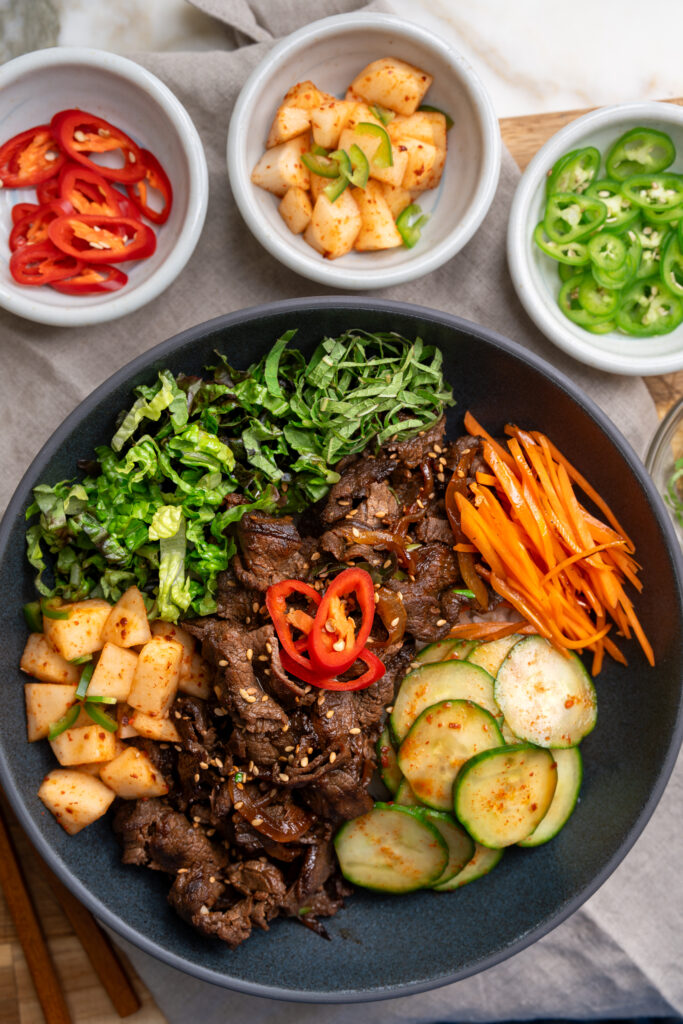
what is bibimbap?
The literal translation of bibimbap is “mixed rice.” Traditional bibimbap usually has seasoned bean sprouts, spinach, carrots and shitake mushrooms and it’s topped with a fried egg over a bowl of rice. It usually comes with a spicy gochujang sauce that you drizzle over the rice.
However, many Korean families usually make their own version of bibimbap as a way to recycle the veggies, banchan (Korean side dishes) and leftover protein in their fridge. It’s also a quick way to get dinner on the table!
key ingredients
You can use almost any vegetables for bibimbap. You really can’t go wrong! Here’s what I used for this bibimbap:
- Bulgogi
- Romaine Lettuce
- Carrots
- Seasoned Cucumbers
- Korean Pear Kimchi
- White Rice
other toppings to consider:
- Seasoned Seaweed (Nori)
- Kimchi
- Sautéed leafy greens like kale and spinach
- Fried Egg

bibimbap sauce
For the bibimbap sauce, I used:
- gochujang (Korean red chili paste)
- sesame oil
- vinegar
- sugar
- water

how can i prep bibimbap ahead of time
As I was writing this post, I quickly realized that for the person reading it and new to the world of bibimbap, they may be asking themselves “How is this a simple recipe?!?!” Most Korean kitchens have a lot of these bibimbap elements already prepared in their fridge. For my newbies to bibimbap, below are some tips to meal prepping the bibimbap so that when it’s time to assemble your bibimbap, it should take no longer than 15 minutes!
Bulgogi (Korean bbq beef):
I usually marinate the bulgogi on a Sunday to use throughout the week. The marinated bulgogi can be store in the fridge for up to 3 days so you can cook small batches of bulgogi whenever you’re ready to make your bibimbap.
Here’s a guide to my quick and easy bulgogi recipe.
SUBSTITUTE OPTION: If you don’t have the time to marinate and cook bulgogi, then just fry an egg! It’s actually my go-to protein option for bibimbap.
korean pear kimchi & Seasoned carrots
You can make these components 3 days in advance and they will hold well in the fridge.
bibimbap sauce
I make a batch of this sauce once a month and I store it in the fridge. Another easy option is to to buy the pre-made bibimbap sauce on Amazon or at your local Korean market. Most markets, like Whole Foods, now carry these pre-made bibimbap sauce as well.
Also, you can make this your own bibimbap by substituting any of these components with any protein and vegetable you readily have available in your fridge!
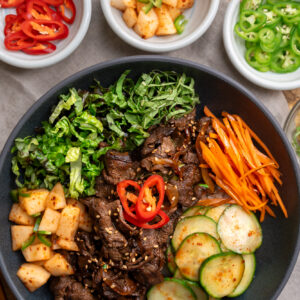
Bulgogi Bibimbap
Ingredients
Seasoned Cucumbers
- 1/2 English cucumbers thinly sliced
- 1 tbsp soy sauce
- 1 tbsp sesame oil
- 1 tsp gochugaru (Korean red chili powder)
- 1/2 tsp sugar
- 1 garlic clove finely minced
- 1 tsp toasted sesame seeds
- pinch of fine sea salt
Korean Pear Kimchi
- 1 Korean pear diced
- 1 tsp fish sauce
- 1 tsp gochugaru (Korean red chili powder)
- 1/2 tbsp serrano peppers (optional) finely diced
- pinch of fine sea salt
Seasoned Carrots
- 1 cup carrots julienned
- 2 tsp sesame oil
- 1 tbsp neutral cooking oil avocado, canola, vegetable or peanut oil
- 1 tsp sugar
- 1 tbsp soy sauce
Bibimbap Sauce
- 1/4 cup gochujang (Korean red chili paste) dried Korean red pepper flakes
- 2 tsp rice vinegar or apple cider vinegar
- 2 tbsp sesame oil
- 2 tbsp sugar
- 2 tbsp water
Additional Bibimbap Ingredients
- 4 cups cooked white or brown rice
- 1.5 cups romaine lettuce chopped
- 1.5 lbs bulgogi refer to link in notes for bulgogi recipe
- perilla leaves (optional) julienned
- toasted sesame seeds for garnish
Instructions
Seasoned Cucumbers
- Combine all the ingredients in a bowl and mix well together. TIP: Make the seasoned cucumbers right before you assemble the bibimbap. If you make it too far in advance, the cucumber will start to release water and lose its crisp texture.
Korean Pear Kimchi
- Combine all ingredients in a bowl and mix well together. Store in fridge for about 15 minutes prior to serving.
Seasoned Carrots
- Heat the oil in a small skillet over medium heat. Once the oil is heated, add the carrots and the seasoning ingredients. Sauté the carrots for about 2-3 minutes until they become soft and tender. Then set aside.
Bibimbap Sauce
- Whisk all the ingredients together in a small bowl.
Bulgogi (Korean BBQ Beef)
- Refer to the recipe link in my post above under "key ingredients for bibimbap"
- TIP: If you are pressed for time, substitute the bulgogi with a fried egg. You can't go wrong either way!
How to Assemble Bibimbap
- Add a cup of cooked rice to a bowl.
- Then top with the seasoned carrots, seasoned cucumbers, Korean pear kimchi, shredded lettuce, julienned perilla leaves and bulgogi. Drizzle the top with the bibimbap sauce and sesame oil. Garnish with additional toasted sesame seeds. Serve immediately. Enjoy!

